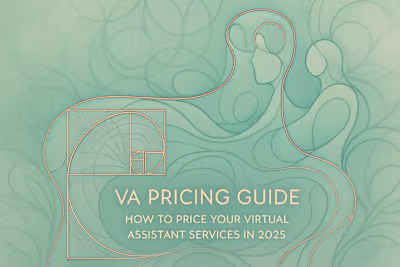From Zero to Booked: How to Land Your First 3 VA Clients

From Zero to Booked: How to Land Your First 3 VA Clients
Laying the Foundation: What Do You Offer and to Whom?
Identify Your Core Skills and Services
Define Your Niche and Ideal First Client
Building a 'Starter' Portfolio (Even with No Clients)
Create Speculative Work (Spec Work)
Offer a Service to a Non-Profit or Local Business
Reframe Past Work and Life Experience
Strategy 1: Leverage Your Warm Market
Announce Your New Business on Social Media
Personally Reach Out to Friends, Family, and Former Colleagues
Strategy 2: The 'Value-First' Approach in Online Communities
Find and Participate in Relevant Facebook & LinkedIn Groups
Answer Questions and Offer Free Advice
References
From Zero to Booked: How to Land Your First 3 VA Clients
Laying the Foundation: What Do You Offer and to Whom?
Identify Your Core Skills and Services
Define Your Niche and Ideal First Client
Building a 'Starter' Portfolio (Even with No Clients)
Create Speculative Work (Spec Work)
Offer a Service to a Non-Profit or Local Business
Reframe Past Work and Life Experience
Strategy 1: Leverage Your Warm Market
Announce Your New Business on Social Media
Personally Reach Out to Friends, Family, and Former Colleagues
Strategy 2: The 'Value-First' Approach in Online Communities
Find and Participate in Relevant Facebook & LinkedIn Groups
"Hi everyone! I'm Jane, a virtual assistant specializing in helping wellness coaches streamline their business operations. Excited to be here and learn from this amazing community. Looking forward to contributing where I can!"
Answer Questions and Offer Free Advice
References
Posted Jun 30, 2025
Starting as a virtual assistant? This step-by-step guide shows you exactly how to land your first 3 clients and build momentum for a successful VA career.










